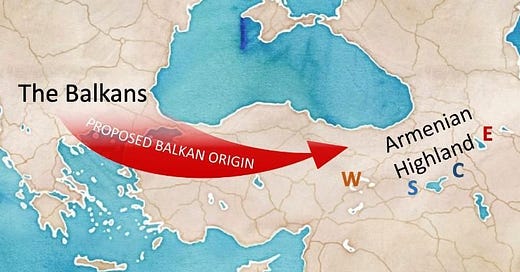Armenia's Genetic History: Debunking Herodotus and Tracing Ancient Origins
New Genomic Insights Rewrite the History of the Armenian Highlands
The origins of the Armenian people, long entwined with the narratives of ancient historians, have undergone a significant re-evaluation thanks to groundbreaking genetic research. A whole-genome study1 challenges Herodotus’ theory that Armenians are descendants of Phrygian settlers from the Balkans, providing new evidence that reshapes our understanding o…
Keep reading with a 7-day free trial
Subscribe to Anthropology.net to keep reading this post and get 7 days of free access to the full post archives.


